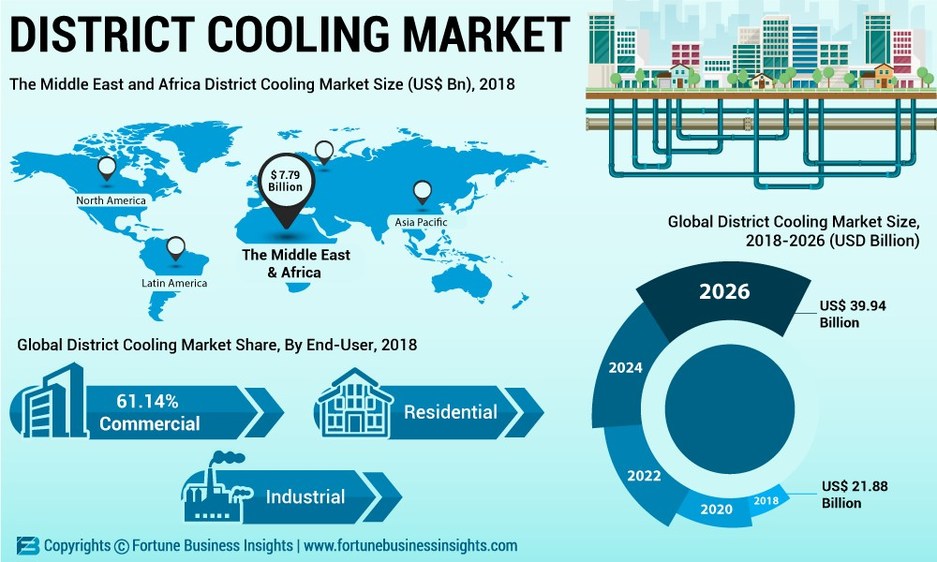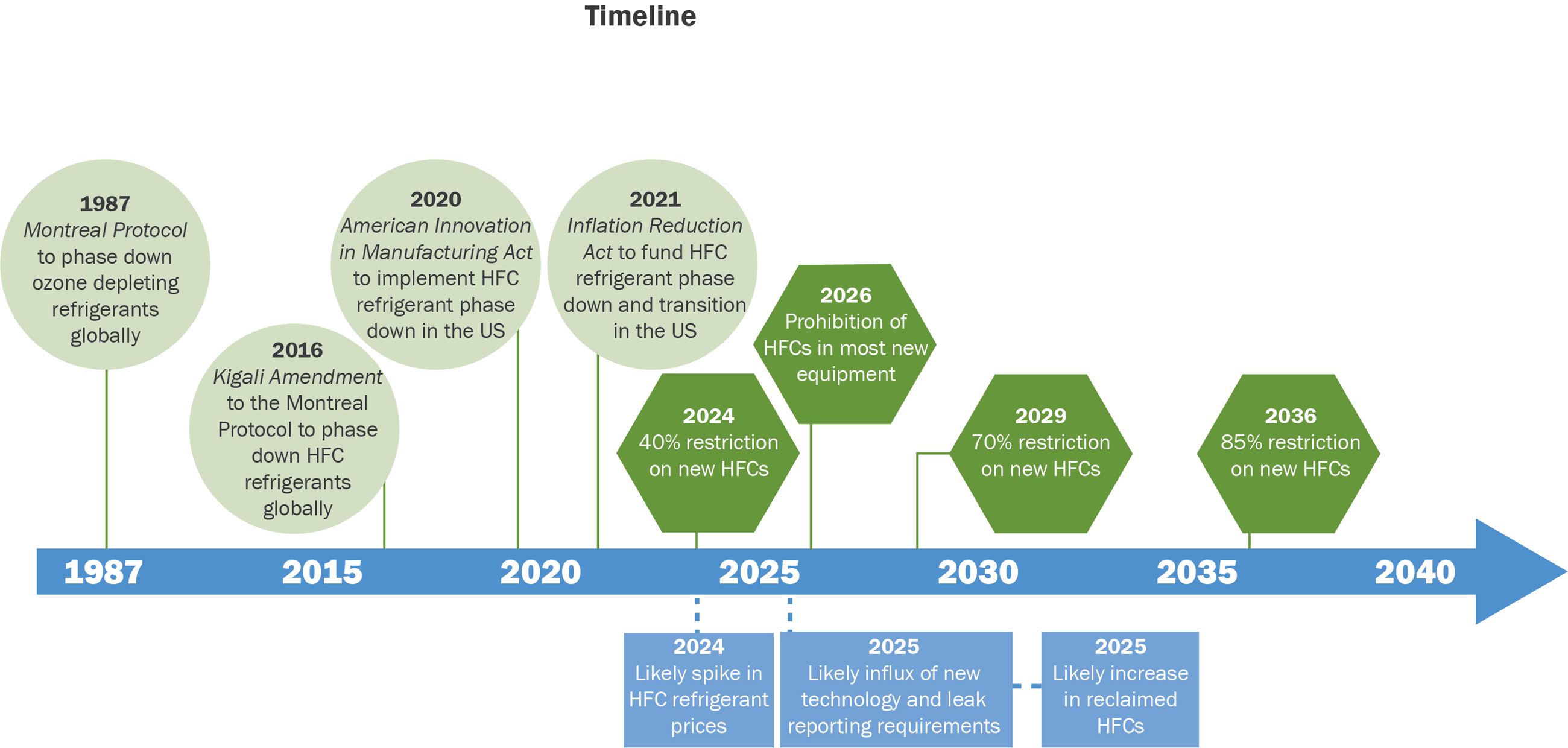Introduction: Cooling in a Warming World
Climate change is no longer a forecast—it is a lived experience. As global temperatures climb and heatwaves intensify, the demand for reliable cooling is becoming a public health imperative and an infrastructure necessity.

Projected growth in cooling demand by 2050 (Source: IEA)
From vaccine preservation in remote clinics to productivity in high-rise office buildings, modern economies and vulnerable populations alike depend on cooling systems. Yet this very dependence poses a paradox: cooling mitigates the symptoms of climate change but often contributes to its cause through inefficient systems and climate-damaging refrigerants.
For governments and policy leaders, the central question is no longer whether to invest in cooling, but how to make it sustainable, inclusive, and climate-aligned.
Why Cooling Must Evolve
By 2050, an estimated 5.6 billion people will live in regions where cooling is essential for survival. Already, South Asia, the Middle East, and parts of Sub-Saharan Africa are experiencing sharp increases in heat-related mortality, food spoilage, and productivity losses.
Unregulated expansion of conventional HVACR (Heating, Ventilation, Air Conditioning, and Refrigeration) technologies threatens:
- Unsustainable spikes in electricity demand
- Escalating emissions from high-GWP refrigerants
- Grid instability, especially in low- and middle-income countries
Governments must urgently respond with a dual focus: expanding access to cooling while reducing its environmental footprint.
Government Incentives Driving Change
Many countries, recognizing the looming crisis, are rolling out policy frameworks and financial incentives to support the transition to efficient, climate-friendly cooling solutions.
Governments and developers are now exploring models like cooling as a service (CaaS), where infrastructure providers manage and operate energy-efficient cooling technologies, reducing capital costs for end users.
1. Regulatory Tools
Minimum Energy Performance Standards (MEPS):
Countries like India, Bangladesh, and Pakistan have introduced MEPS for air conditioners and refrigerators, helping phase out inefficient models from the market.
National Cooling Action Plans (NCAPs):
India led the way with its 2019 NCAP, followed by similar efforts across the region. These blueprints align national policies with global climate agreements like the Kigali Amendment under the Montreal Protocol.
Import Restrictions on High-GWP Refrigerants:
Through licensing and quota systems, many countries are restricting imports of refrigerants like R-22 and promoting alternatives like R-32, ammonia, and CO₂.
2. Financial & Tax Incentives
Green Building Subsidies:
Malaysia, Thailand, and the UAE offer rebates and low-interest financing for developers meeting green building certifications (LEED, EDGE, etc.).
Solar Cooling Subsidies:
Pakistan's Alternative Energy Development Board (AEDB) and various provincial energy departments are piloting solar HVAC grants in rural and peri-urban areas.
Carbon Market Mechanisms:
Through voluntary carbon credits and Article 6 frameworks under the Paris Agreement, countries are incentivizing clean cooling investments by enabling international financing for verified GHG reductions.

Comparison of cooling incentives across different regions: Source PR Newswire
Success Stories: Where Policy and Practice Align
🌍 Rwanda: A Model in Africa
Rwanda's leadership on the Kigali Amendment and national enforcement of MEPS for cooling appliances demonstrates how even resource-constrained countries can lead climate-friendly transitions with effective policy and donor partnerships.
🏙️ Dubai: District Cooling Pioneer
Dubai's Empower utility has created one of the world's largest district cooling networks, serving over 100,000 buildings. Regulatory mandates for new developments to connect to centralized cooling plants have led to 50% energy savings compared to traditional systems.
🇮🇳 India: Residential Cooling Challenge
India's collaboration with Energy Efficiency Services Limited (EESL) and the World Bank has enabled bulk procurement and market transformation for super-efficient air conditioners, reducing upfront costs by over 20%.
🇵🇰 Pakistan: Gradual but Growing Momentum
Pakistan's NEECA, ENERCON, and provincial authorities have initiated awareness programs and pilot retrofits. While the Kigali commitment is in place, capacity-building and financial de-risking mechanisms are still evolving.
Technology and Market Innovations
Refrigerant Shift and Kigali Amendment Implementation
Transitioning from high-GWP refrigerants like R-22 to natural and low-GWP alternatives is accelerating.
Governments can ease this shift through tax exemptions, training programs, and infrastructure for safe handling and recovery.
Smart cooling systems, powered by IoT and AI, offer real-time optimization and can cut energy use by up to 30% in commercial buildings. These innovations are transforming the way sustainable HVAC design is approached in hot-climate regions.

Pathways for refrigerant transition under the Kigali Amendment
Efficiency Through Smart Cooling Systems and Sustainable HVAC Design
Inverter-based systems and VRF are now mainstream, but adoption remains slow in budget-sensitive markets.
Digital monitoring, AI control, and predictive maintenance can enhance savings but require policy support for smart metering and IoT integration.
Passive and Hybrid Cooling
Rooftop reflectivity incentives, cool roof mandates, and building codes that integrate cross-ventilation, green walls, and shading devices can halve cooling loads.
Barriers and Institutional Challenges
Despite the momentum, the cooling transition faces systemic hurdles:
- High upfront costs for efficient systems remain a barrier for households and SMEs.
- Lack of enforcement in building energy codes and product labeling limits market transformation.
- Skilled workforce shortages slow the deployment of advanced systems.
- Weak inter-agency coordination often fragments national strategies.
These issues underscore the need for a whole-of-government approach involving energy, environment, health, housing, and industrial development departments.
Community-Level Innovation: Cooling for All
Beyond buildings and industries, the cooling revolution must extend to underserved and vulnerable communities.
- Community Cooling Hubs: Shared, solar-powered air-conditioned spaces in low-income neighborhoods can provide daytime relief during extreme heat.
- Thermal Storage Initiatives: Pilots in Southeast Asia demonstrate that ice-based storage systems can drastically reduce peak demand in commercial districts.
- Behavioral Nudges: Public campaigns encouraging thermostat settings at 26°C and promoting shade, insulation, and maintenance can lead to significant energy savings.
International Partnerships: The Way Forward
Global support is critical to scaling national efforts. Multilateral initiatives such as:
- UNEP Cool Coalition
- Clean Cooling Partnership (UK, US, and private sector donors)
- Climate and Clean Air Coalition (CCAC)
are providing technical assistance, blended finance, and policy toolkits to support sustainable cooling transitions. Global collaboration also supports Kigali Amendment implementation, ensuring a coordinated transition away from high-GWP refrigerants through training, monitoring, and financing frameworks.
Regional cooperation among South Asian countries can also play a powerful role in accelerating knowledge exchange, fostering innovation, and developing localized solutions tailored to shared climatic and infrastructural challenges.
Conclusion: From Climate Crisis to Policy Opportunity
Cooling is no longer a peripheral issue—it is central to health security, economic productivity, and climate justice.
The HVACR industry has delivered innovative tools. It is now the responsibility of governments and international institutions to provide the enabling environment:
- Policies that enforce efficiency and refrigerant transition
- Incentives that make innovation affordable
- Awareness that empowers people to make climate-smart choices
The global South, including countries like Pakistan, has an opportunity not to replicate the energy-intensive paths of the past, but to leapfrog to sustainable, inclusive, and equitable cooling systems.
We can cool the planet—not by consuming more, but by thinking smarter. The time to act is now.